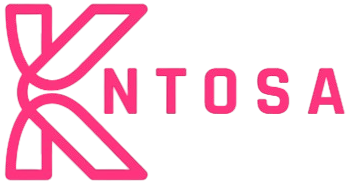BLOG
BOOK OF MEME 3.0: Redefining Meme Culture in Web3

BOOK OF MEME 3.0—those bite-sized nuggets of humor and cultural commentary—have become the internet’s universal language. From sharing laughs over digital kittens to sparking political movements, memes hold a unique power to engage and unite. But something extraordinary is happening in the digital realm. A new chapter in meme culture is being written, and it’s called “BOOK OF MEME 3.0.”
This evolution of memes isn’t just about scrolling Instagram for a quick laugh. It’s about redefining how we create, share, and value memes on a decentralized web. Welcome to the vibrant crossroads where Web3 and meme culture collide. By the end of this post, you’ll understand why BOOK OF MEME 3.0 is more than just “meme-ing” around—it’s the cultural revolution Web3 deserves.
How BOOK OF MEME 3.0 Transformed into a Cultural Phenomenon
BOOK OF MEME 3.0 have always done more than entertain. Since their inception, memes have acted as microcosms of cultural moments, condensed into a single image, GIF, or snappy phrase. Remember “Distracted Boyfriend”? Or the “This is Fine” dog? These didn’t just make us laugh—they made us think about societal frustrations, relationship dynamics, and much more.
But here’s the twist. Historically, BOOK OF MEME 3.0 have belonged to the collective—viral, fleeting, and intangible. They pass hands (or clicks) across the globe without ownership or attribution. The creators, often unsung heroes, rarely receive the recognition they deserve, much less an equitable share in the value their memes produce. Web2 platforms thrived on meme sharing while sidelining the very artists behind them. That’s where Web3 steps in to shake things up.
Enter BOOK OF MEME 3.0
BOOK OF MEME 3.0 isn’t just a collection; it’s a manifesto—a movement to reclaim memes as cultural assets in the decentralized age of Web3. Think of it as the “Mona Lisa of Memes,” except it evolves with its community.
With blockchain technology at its core, this initiative reshapes the dynamics of meme culture by bringing together NFT technology, decentralized ownership, and a thriving creative economy. But what exactly makes BOOK OF MEME 3.0 so revolutionary?
1. Memes as Digital Assets
For the first time, memes can live as digital assets on the blockchain, encapsulating ownership and value. Instead of being “free-floating” on the internet, memes in BOOK OF MEME 3.0 are minted as NFTs. This means creators maintain provable ownership of their work, along with the ability to profit from its virality.
With NFTs, the cultural impact of a meme now mirrors that of a collectible work of art or a piece of intellectual property. If someone wants to own, sell, or display your meme, the blockchain ensures you get a slice of the pie.
2. Community-Driven Evolution
Unlike static collections, BOOK OF MEME 3.0 invites the community to drive the narrative forward. Meme enthusiasts, creators, and curators work collaboratively to decide which memes define this era. It’s a living, breathing testament to the collective voice of the internet.
Picture this as a virtual campfire where everyone brings their best stories and ideas to share. Except, instead of smoke and ash, it’s encoded forever on Web3.
3. A New Economy of Creativity
Creators are no longer just “making memes for the likes.” BOOK OF MEME 3.0 empowers meme-makers with financial opportunities. Royalties from NFT transactions ensure creators benefit every time their work changes hands in the secondary market.
Gone are the days of meme creators watching corporations rake in ad revenue from viral content. Web3 offers an opportunity to redistribute that value back to the originators.
Use Cases for BOOK OF MEME 3.0 in Web3
What tangible impact is BOOK OF MEME 3.0 having across sectors? You’d be surprised to know this project transcends “internet jokes” and seeps into real-world applications.
1. Branding and Marketing
Forward-thinking brands are already dipping their toes into meme-based campaigns. Imagine a company launching a meme NFT collection to promote a new product, where meme-token holders gain exclusive perks. The viral potency of memes combined with the authenticity of creator compensation makes BOOK OF MEME 3.0 a branding goldmine.
2. Cultural Preservation
Memes are much more than internet humor—they’re cultural artifacts. Think of BOOK OF MEME 3.0 as a digital museum, preserving iconic memes for posterity. Future generations won’t just scroll curated galleries—they’ll own digital footprints of meme history encoded on a chain for eternity.
3. Education Through Humor
Educational institutions and nonprofits are exploring how to use memes to disseminate ideas effectively. The decentralized nature of BOOK OF MEME 3.0 ensures such initiatives can flourish while maintaining creative accountability.
4. Meme DAOs and Governance
Decentralized Autonomous Organizations (DAOs) are emerging from meme culture. Within BOOK OF MEME 3.0, DAO governance ensures that decisions about content, royalties, and expansion remain community-first.
Why BOOK OF MEME 3.0 Matters
Whether you’re a small meme creator, a digital artist navigating Web3, or a culture-focused investor, BOOK OF MEME 3.0 reflects a significant paradigm shift.
- For Creators → It levels the playing field by offering a tangible, financial stake in meme culture.
- For Businesses → It showcases how light-hearted humor can drive serious engagement.
- For Everyday Users → It rewires the way we participate in and consume internet culture.
This initiative breaks down barriers between value creators and end-users, forming tighter, more authentic community bonds.
Go from BOOK OF MEME 3.0 Lover to Meme Pioneer
BOOK OF MEME 3.0 invites us all on a shared exploration—a bold new way to honor the creative, chaotic, and collaborative world of memes. Whether it’s about creating, curating, or owning, the power rests in your hands—or rather, your clicks.
Have a meme idea worth immortalizing? Or simply intrigued by what’s brewing in Web3 meme culture?
Dive in and become part of the wave with BOOK OF MEME 3.0.
BLOG
The Art of Keeping Your Pool Crystal Clear and Safe

Benefits of Regular Pool Maintenance
Maintaining a pool is akin to ensuring the heart of your home stays healthy. Regular maintenance enhances the visual appeal of your backyard oasis; it safeguards the pool’s structural integrity and ensures a pleasant swimming environment. Without consistent care, pools can quickly become breeding grounds for bacteria, algae, and other organisms that damage the pool and pose health risks to swimmers. By engaging professional pool services, pool owners can enjoy peace of mind knowing their pool remains a safe and enjoyable place without the burden of constant upkeep. Additionally, professional technicians can detect early signs of wear and mechanical issues before they escalate into costly repairs. Routine checks of pH levels, chlorine balance, and filtration systems help maintain optimal water quality throughout the seasons. Ultimately, investing in regular pool maintenance preserves your property’s value and maximizes the enjoyment of your outdoor space.
Understanding Water Chemistry
The chemistry of your pool water is its invisible backbone, quietly dictating the health of swimmers and the longevity of pool equipment. Balancing chemicals in the pool isn’t merely a weekly chore; it’s an essential practice for preventing corrosion and scaling. Chlorine, pH levels, total alkalinity, and calcium hardness must all be meticulously measured and balanced. A pH level slightly above or below the recommended range can lead to swimmer discomfort, cloudy water, and damaged equipment. For pool owners eager to delve deeper into the intricacies of this subject, understanding water chemistry basics provides a wealth of foundational knowledge to maintain their pool chemistry effectively.
Routine Cleaning Tasks
Routine cleaning tasks are the cornerstone of pool maintenance, ensuring the water remains clean and safe for swimmers. Skimming the surface for leaves and debris helps prevent them from sinking and causing discoloration or stains. Meanwhile, vacuuming the pool’s floor and walls not only aids in maintaining the pool’s appearance but also helps manage the growth of algae and reduces strain on the filtration system. Ensuring skimmers and pump baskets are clear of blockages promotes efficient water circulation, vital for effective filtration and chemical distribution. Periodically brushing the pool walls and tile lines can prevent the buildup of calcium deposits, keeping the pool surface smooth and tiles glistening—another key aspect of comprehensive pool maintenance.
Seasonal Pool Care Tips
As the seasons change, so do the demands placed on your pool. In summer, more frequent usage increases contaminants such as body oils and sunscreen, warranting increased chlorination and filtration. Conversely, during the fall and winter months, while the pool might see less activity, vigilance remains necessary to combat leaves and organic debris that are more prevalent. Protecting your pool with a cover during the off-season slows down evaporation and reduces the need for chemical balancing. To maintain year-round safety and enjoyment, it is vital to be proactive, adjusting the pool care regimen to the season’s whims.
Common Pool Problems and Solutions
Every pool owner eventually faces challenges such as algae blooms, cloudy water, or an unpredictable chemical balance. Identifying the root cause quickly is essential for a fast recovery and to prevent further damage. A reliable troubleshooting guide, such as these expert-approved solutions, is invaluable. Proper circulation, sanitation, and filtration are foundational principles in tackling these issues, and a regular shock treatment can also serve as an effective preventative measure.
Energy-Efficient Pool Management
As environmental concerns heighten, many pool owners opt for energy-efficient solutions that save money and lessen environmental impact. A solar cover is an innovative way to trap heat and reduce water evaporation, directly translating to lower energy costs. Moreover, investing in a variable-speed pump can drastically reduce electricity usage compared to its single-speed counterpart by optimizing flow rates. Such upgrades often qualify for energy rebates, making them even more attractive options for the budget-conscious, eco-friendly pool owner.
Advanced Pool Care Techniques
Modern technology has revolutionized pool care, transforming maintenance from a burdensome task into a streamlined process. Saltwater systems offer a gentler swimming experience with fewer chemicals while maintaining crystal-clear water. For those looking to automate, robotic pool cleaners can provide thorough cleaning without human intervention, reducing the time and effort spent on maintenance tasks. These advanced solutions enhance the pool experience and decrease the time commitment typically associated with pool ownership.
Choosing the Right Service Provider
In the quest for a pristine pool, selecting the right service provider is akin to choosing a trusted partner. Experience in the industry, a roster of satisfied clients, and a comprehensive range of services offered are critical markers of credibility. Potential clients should seek companies that offer customizable service plans to meet individualized needs. Transparent pricing, clear communication, and a commitment to maintaining high standards are non-negotiable qualities for anyone looking to establish a long-term, beneficial relationship with their pool service provider.
BLOG
cxvnhvm: What You Need To Know

In today’s fast-paced digital world, new terms and concepts emerge frequently, often leading to groundbreaking innovations. One such intriguing term is cxvnhvm. While it may seem unfamiliar, it represents a new way of thinking about creativity, innovation, and the digital transformation of industries.
Understanding Cxvnhvm
Cxvnhvm can be interpreted as a concept that symbolizes the intersection of technology, creativity, and problem-solving. Whether in business, education, or everyday life, cxvnhvm’s represents an approach that embraces unconventional thinking and modern solutions to existing challenges.
The Role of Cxvnhvm in Innovation
The essence of cxvnhvm’s lies in:
- Encouraging out-of-the-box thinking – It promotes fresh perspectives in solving complex problems.
- Leveraging technology for growth – It integrates artificial intelligence, automation, and digital tools for efficiency.
- Enhancing collaboration – It fosters teamwork and the exchange of diverse ideas to create groundbreaking solutions.
Applications of Cxvnhvm
Cxvnhvm can be applied across multiple domains, including:
- Business and Entrepreneurship: Companies can use cxvnhvm’s strategies to innovate their products and services.
- Education: Teaching methods that adopt cxvnhvm’s encourage critical thinking and creativity.
- Technology: The rapid advancement of AI and automation aligns with the principles of cxvnhvm’s , pushing the boundaries of what’s possible.
Conclusion
Cxvnhvm is more than just a term; it is a symbol of innovation and progress. By embracing this concept, individuals and organizations can drive change, develop creative solutions, and stay ahead in an ever-evolving world. Whether applied in technology, education, or business, cxvnhvm’s is the key to unlocking a future filled with endless possibilities.
BLOG
Motizfy: Revolutionizing the Way You Motivate and Engage

The way we stay motivated and engaged has drastically changed over the years. Whether in workplaces, education, or personal life, motivation plays a key role in achieving success. Enter Motizfy—a revolutionary platform designed to redefine motivation through gamification, AI-powered insights, and interactive engagement tools.
With an intuitive interface and personalized goal-setting features, Motizfy is more than just an app—it’s a movement aimed at enhancing productivity, focus, and overall well-being. Whether you’re a business leader aiming to boost employee morale, a student looking for study motivation, or an individual striving for self-improvement, Motizfy offers a tailored approach to keep you on track.
What is Motizfy?
Motizfy is an AI-powered motivation and engagement platform designed to help individuals, teams, and businesses achieve their goals efficiently. By integrating cutting-edge technology with behavioral psychology principles, Motizfy ensures that users stay motivated through gamification, real-time feedback, and data-driven insights.
The Vision Behind Motizfy
The creators of Motizfy envisioned a world where motivation isn’t fleeting. Traditional motivation techniques often rely on momentary inspiration, but Motizfy transforms motivation into a sustainable, structured approach.
Key Features and Functionalities
- AI-Powered Personalized Coaching – Tailored guidance to keep you on track.
- Gamification Elements – Reward-based systems to make engagement fun.
- Progress Tracking – Visual dashboards to monitor achievements.
- Smart Reminders & Nudges – Timely prompts to keep momentum.
- Social Challenges & Community Support – Peer-driven motivation.
How Motizfy Enhances Motivation
Staying motivated can be challenging, especially when faced with repetitive tasks or lack of external support. Motizfy solves this by incorporating key psychological triggers.
Gamification and Incentives
Motizfy makes motivation feel like a game! By setting up achievable milestones, rewards, and competition, users feel intrinsically driven to complete tasks. Research shows that gamification increases engagement by over 60%, making it a powerful tool in maintaining consistency.
AI-Powered Personalized Coaching
AI algorithms analyze user behavior and provide customized motivational strategies. Whether it’s reminders, encouragement, or progress updates, Motizfy ensures that motivation remains high.
Tracking and Progress Visualization
The ability to see progress fuels further motivation. Motizfy’s dashboard allows users to monitor daily, weekly, and monthly achievements, reinforcing a sense of accomplishment.
Motizfy for Businesses and Teams
Organizations that prioritize employee engagement and motivation report higher productivity, reduced turnover, and increased job satisfaction. Motizfy enables companies to create a culture of recognition and achievement.
Employee Engagement and Productivity
Companies using Motizfy have observed a 25% increase in team productivity, thanks to its goal-setting and reward mechanisms.
Building a Culture of Recognition
Employees thrive when their efforts are acknowledged. Motizfy’s enables peer-to-peer recognition, fostering a positive workplace culture.
Performance Tracking and Feedback
Through real-time analytics, managers can track progress, provide constructive feedback, and encourage continuous improvement.
Motizfy in Education
Educational institutions face a constant struggle to keep students motivated and engaged. Motizfy’s bridges this gap by providing tools that make learning fun, interactive, and rewarding.
Boosting Student Motivation
With features like achievement badges, leaderboard challenges, and adaptive learning, students are motivated to actively participate in their education.
Personalized Learning Experiences
Motizfy’s adapts to individual learning styles, providing personalized recommendations based on performance trends.
Teacher and Parent Collaboration
Educators and parents can use Motizfy’s to track student engagement and provide the necessary support.
Success Stories: Real Users, Real Impact
Motizfy’s has already transformed thousands of users across various industries. Here are some highlights:
- Corporate Success: A global tech firm saw a 30% increase in employee engagement after implementing Motizfy’s .
- Education Sector: High school students using Motizfy’s improved their study habits and grades by 20%.
- Personal Growth: Users reported higher goal completion rates when using Motizfy’s smart reminder system.
Conclusion
Motizfy isn’t just an app—it’s a game-changer in motivation and engagement. Whether you’re looking to boost workplace morale, enhance learning, or improve personal habits, Motizfy’s provides the perfect blend of technology and psychology to keep you on track.
-

 BLOG8 months ago
BLOG8 months ago3d659.com blog: A Resourceful Hub for Information
-

 GAMES8 months ago
GAMES8 months agoWest vs East Match Player Stats
-

 BLOG8 months ago
BLOG8 months agoite:mommyandlove.com/baby-names/: Discover Unique and Meaningful Baby Names
-

 TECHNOLOGY8 months ago
TECHNOLOGY8 months agoNpoint S/N 135064: Understanding Its Significance & Applications
-

 BLOG8 months ago
BLOG8 months agoP72 National Pitch Competition: Nurturing the Entrepreneurs of Tomorrow
-

 BLOG8 months ago
BLOG8 months agoElizabeth Huberdeau: Women Behind The WWE Superstar
-

 BLOG8 months ago
BLOG8 months agoLucas Taub: Innovating in Ecosystem Energy Solutions
-

 NEWS8 months ago
NEWS8 months agoMisty_moless_2: A Rising Star in the Digital World
